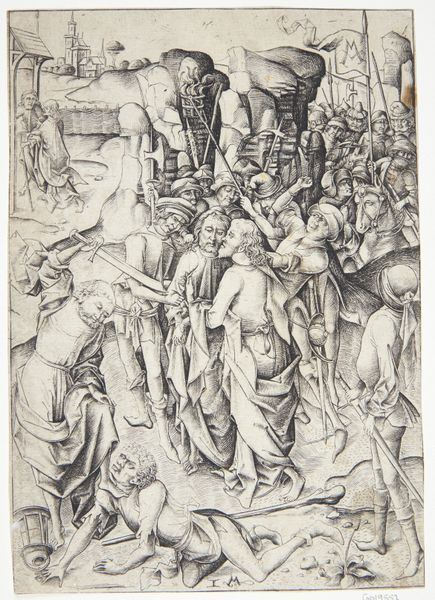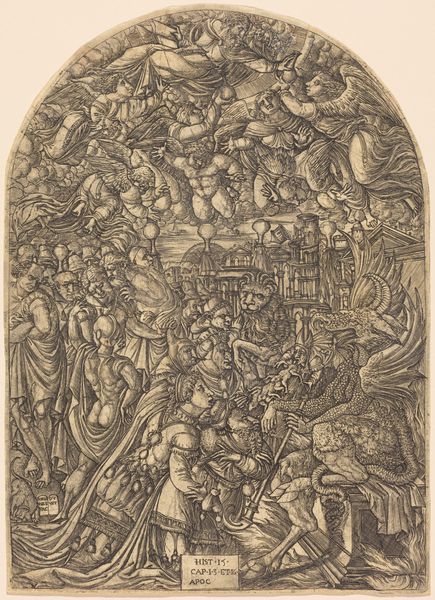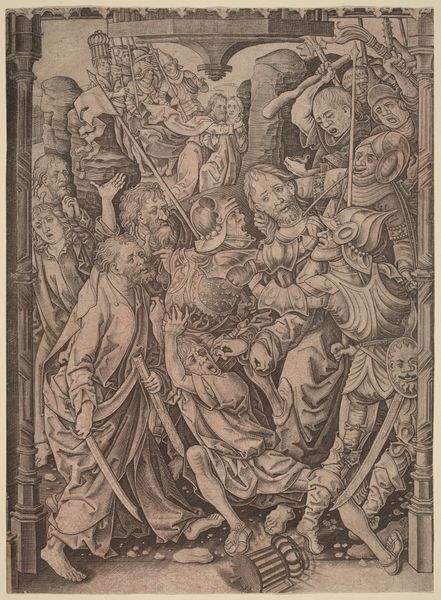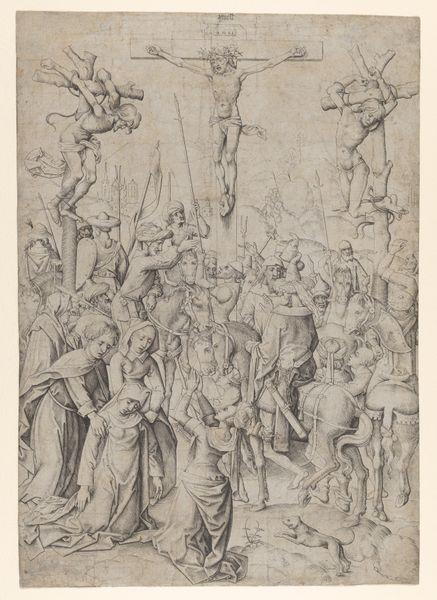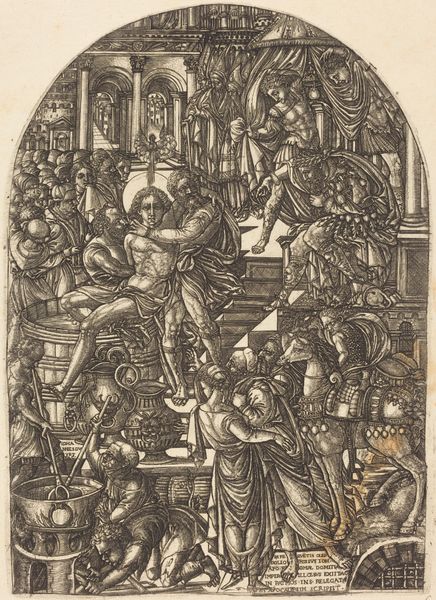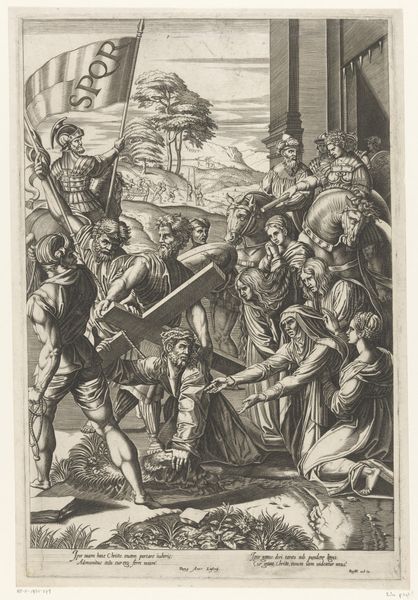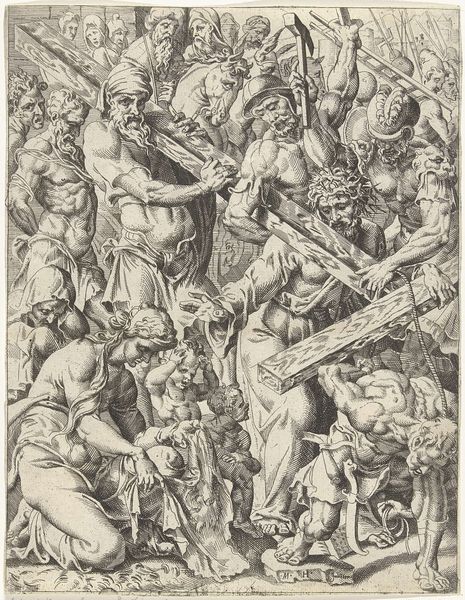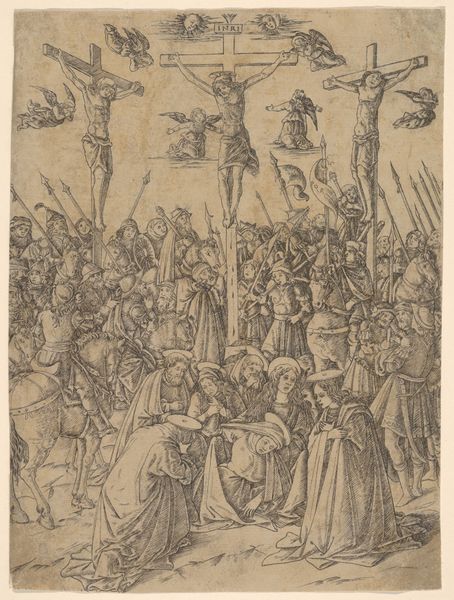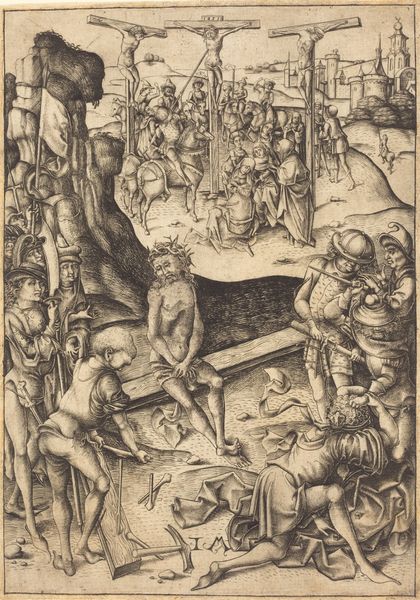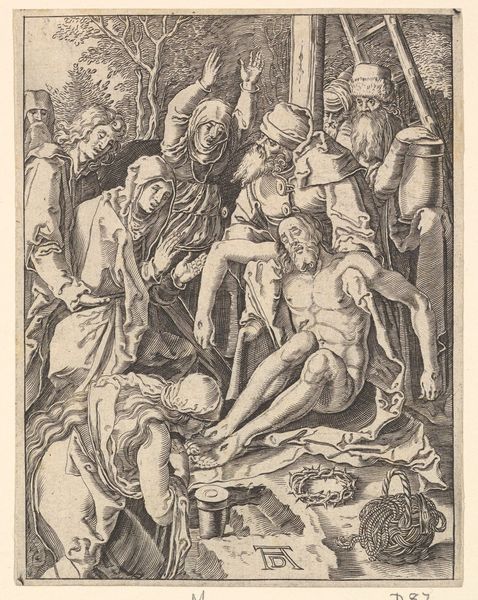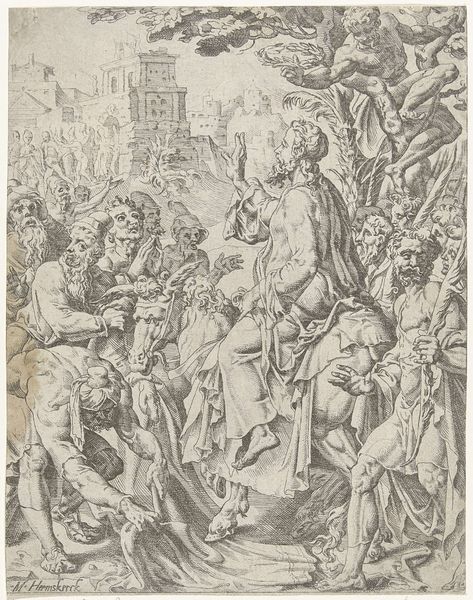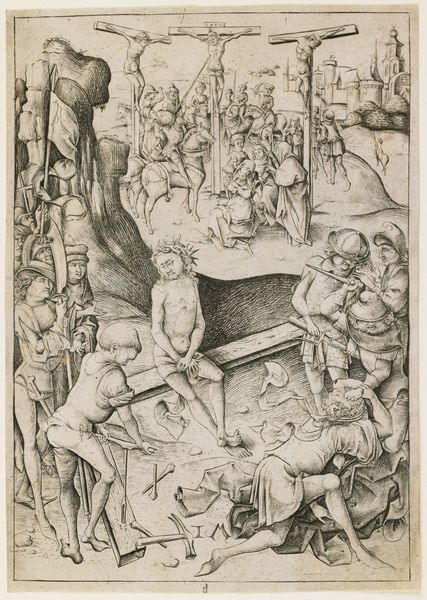
drawing, print, intaglio, ink, engraving
#
drawing
#
ink drawing
#
narrative-art
#
pen drawing
# print
#
intaglio
#
figuration
#
ink
#
soldier
#
pen-ink sketch
#
men
#
pen work
#
history-painting
#
northern-renaissance
#
engraving
#
christ
Dimensions: Sheet: 8 5/16 × 5 15/16 in. (21.1 × 15.1 cm)
Copyright: Public Domain
Curator: Just look at the sheer density of line in Israhel van Meckenem's engraving, "The Betrayal and Capture of Christ," likely completed between 1435 and 1503. It’s overwhelming at first glance, isn’t it? Editor: Overwhelming, yes, but also claustrophobic. All that ink, packed so tightly. You can almost feel the press pushing the paper into the engraved lines. The very medium seems to mirror the suffocating tension of the scene. Curator: Exactly. Van Meckenem clearly wanted to convey the emotional and spiritual weight of this moment. The faces are so expressive. The symbol of Judas's kiss—a moment of ultimate betrayal rendered so publicly. The composition drives the psychological torment right to the surface. Editor: I’m drawn to the materiality of it. Engraving requires such precision, such intense labor. Each line etched meticulously. How does this painstaking process inform the viewer’s experience, their understanding of the narrative itself? There is a deliberate human element etched into this piece. Curator: The intentionality behind each mark. It is hard to not consider the traditional significance, from that period in time, as related to printmaking's increasing influence. How these religious scenes were becoming more widely available for mass devotional and religious use. The original intent was for many faithful persons to observe and find symbolic solace. Editor: This availability transformed the artwork into a product, an object to be consumed. Did the increase in supply impact the "value" in a time of spiritual reflection, shifting both how and why art was appreciated? Or does such reproductive nature alter or amplify its symbolic weight, depending on individual use? Curator: It undoubtedly complicates our reading of the piece. We are drawn in by the drama, the intimate betrayal, but at the same time reminded of this piece's journey, from laboring artisan to readily consumed piece. The work feels as dense with ideas as it is with ink. Editor: Precisely. Thinking about the tools, the process, forces us to consider how the meaning is embedded in every stage of its making and in the socioeconomic situation in which it was created, distributed, and received. Curator: Seeing this engraving now, with our modern eyes, adds even more layers of interpretation to those historical considerations. It speaks to human emotions of devotion and treachery through a looking glass, as relevant then as they remain today. Editor: And through examining the how and the what it is made of, the human effort that materialized, we can start unpacking that looking glass and gaining perspective through new depths.
Comments
No comments
Be the first to comment and join the conversation on the ultimate creative platform.
